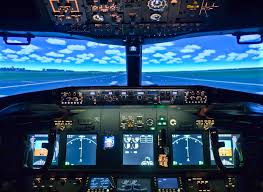08/03/2016

Specialist providers of training and development are well aware of the ‘transfer problem’ also known as the ‘transfer gap.’
We can pose the question – how much of the skills and knowledge taught through training events will be transferred to the workplace, i.e. how much will the trainee be using on the job six months after finishing the training?
The question helps to assess the return on training investment. Some studies have shown that transfer of training via traditional training methods is surprisingly low. The reasons can be related to the trainee, the organisation, or the training itself. Money can be wasted.
All forms of simulation offer a chance to cement the transfer of training by creating a realistic work-place experience. Flight training simulators are a good example. The experience of flying the simulator is just as good as actually flying an aircraft.
In fact it is better because the simulation programme is safe and risk free. Pilots are free to try out manoeuvres in a high stakes situation without risking the lives of passengers. The simulation programme “knows the future” and so feedback can be provided to the pilot on the consequences of each decision they make. Also, the simulation parameters are consistent for each operator to make evaluation and assessment easy.
Now imagine that some passengers on the aircraft also have a set of flight controls that can actually manoeuvre the plane. In order to land the aircraft successfully the pilots have to manage communication with these passengers, deal with their thoughts and emotions, provide them with information and persuade them on a certain course of action.
That is where role-plays provided by actors trained in simulation come in. They simulate complex interactions between people. They train “soft skills” – allowing for emotional complexity and pitfalls in communication. Trainee doctors learn about communication and diagnosis through role-play simulation with trained actors called Simulated Patients or Standardised Patients. It is a very useful technique for training people in high stakes activities like sales and customer service, having difficult conversations, delivering bad news or crisis management.
For the employer or educator, role-play lets you see your people in realistic high-stakes situations. This is equally useful for seeing behind the closed door of medical consultations or customer service or sales consultations. It is the soft-skill equivalent of seeing behind the closed door of the cockpit.
Professional role-play simulation, like all simulation, creates a scenario that is as close to the real work situation as possible. It begins the process of transferring the training to the workplace because the trainee is already experienced in dealing with a particular situation and has practised a range of strategies and techniques that work for them. It also gives the trainee a problem-solving approach based on getting used to trying out strategies, receiving feedback and weaving in their own reflection. Role-play simulation builds a bridge for trainees to cross the ‘transfer gap.’
** GUEST BLOG from OPL DIRECTOR KEITH COLLINS who has recently conducted research on the use of roleplay simulation on transfer of learning.

